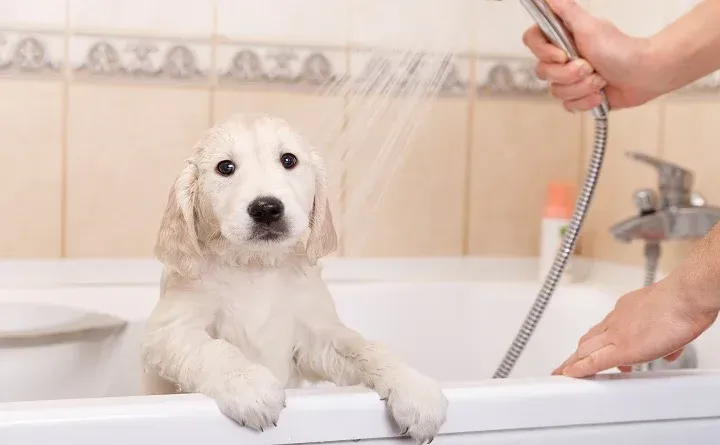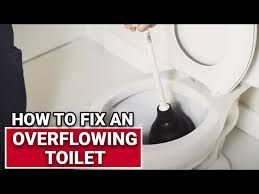10 Plumbing Emergencies You Cannot Ignore
Plumbing emergencies can strike without warning, turning a calm day into a stressful one in minutes. From sudden leaks to complete system failures, these problems can disrupt your routine, cause significant water damage, and lead to costly repairs if not addressed quickly. Ignoring these issues can also jeopardize the health and safety of everyone in the home. For homeowners, recognizing a plumbing emergency and taking swift action is essential to minimize potential damage and prevent further complications.
In this guide, we’ll walk you through ten plumbing emergencies that you simply cannot ignore. For each, we’ll break down what makes it an emergency, the potential consequences of neglecting it, and some DIY tips to help you manage the situation temporarily before a professional arrives. By being prepared and informed, you can protect your home, avoid hefty repair bills, and gain some peace of mind knowing that you’re ready to tackle any plumbing issue that comes your way. Let’s dive in and explore how you can keep your home safe, dry, and damage-free.
1. Burst Pipes
A burst pipe is one of the most dreaded plumbing emergencies homeowners can face, and it’s especially common during colder months when freezing temperatures can cause water in pipes to expand. If a pipe bursts, water can quickly flood your home, leading to significant damage in a matter of minutes. Common areas affected by burst pipes are basements, crawl spaces, and garages, but this can happen in any part of your home. Burst pipes often occur in older plumbing systems, but they can also happen in newer installations if pipes are exposed to freezing temperatures or if there is too much pressure within the system.
Consequences: Ignoring a burst pipe can be disastrous. Water can rapidly spread throughout walls, floors, and ceilings, resulting in costly repairs, mold growth, and possible structural issues. The water damage can also ruin your belongings, carpeting, and furniture, creating an overwhelming cleanup and repair bill.
DIY Treatment:
- Shut Off Water Supply: First, immediately shut off the main water valve to stop the flow.
- Drain the Faucets: Open all faucets to drain remaining water from the pipes, which can help alleviate pressure.
- Apply a Temporary Fix: If you can locate the burst section, wrap it with a rubber patch or duct tape as a short-term solution until a plumber arrives.
2. Overflowing Toilet
An overflowing toilet is both unpleasant and unhygienic, creating an unsanitary mess and posing a health risk. This emergency is often caused by a blockage in the toilet’s drain or a malfunction in the float mechanism that controls the water level in the tank. The situation can become more alarming if water continues to flow, increasing the risk of water spilling onto the bathroom floor.
Consequences: An overflowing toilet can quickly lead to water damage in the bathroom, affecting flooring, drywall, and possibly the ceiling below if on an upper floor. Left unchecked, it can cause mold growth, odors, and potential contamination, all of which require extensive cleanup.
DIY Treatment:
- Turn Off the Water Supply: Locate the shutoff valve near the toilet and turn it off to stop the water from flowing.
- Use a Plunger: A few gentle plunges can often clear blockages.
- Add Dish Soap: Pour a small amount of dish soap into the bowl to help loosen clogs, then try flushing after a few minutes.
3. Sewer Backup
A sewer backup is a serious issue, as it involves wastewater flowing back into your home through the plumbing. This emergency can occur due to blockages in the main sewer line, tree roots infiltrating pipes, or an overloaded system following heavy rainfall. Sewer backups are a major health hazard, as the water can contain harmful bacteria and pathogens.
Consequences: Ignoring a sewer backup can lead to extensive contamination of your home, damage to floors and walls, and a significant health risk for anyone exposed. This type of water damage requires professional sanitation and restoration services to ensure the home is safe again.
DIY Treatment:
- Avoid Using Water: Immediately stop using any water in the house to prevent additional sewage from backing up.
- Ventilate the Area: Open windows to allow fresh air in and reduce odor.
- Use a Plunger or Sewer Snake: If the blockage is within reach, attempt to clear it. However, avoid further aggravating the issue and contact a professional if it persists.
4. Leaking Water Heater
A leaking water heater can cause gradual damage that often goes unnoticed until the situation becomes more severe. This usually happens due to a broken valve, corroded tank, or sediment buildup that weakens the tank's integrity. The leaking water can slowly pool around the heater, risking water damage and increased utility bills.
Consequences: If not addressed, a leaking water heater can worsen, eventually causing significant water damage and potentially leading to tank rupture. This can cause a large flood in your home, impacting flooring and anything stored near the heater.
"How to Prevent Waterline Damage in Your Home"
DIY Treatment:
- Turn Off the Power Supply: For electric heaters, turn off the breaker; for gas heaters, turn off the gas valve.
- Shut Off the Water: Turn off the cold water supply valve to prevent further leakage.
- Drain the Tank: Carefully drain the water heater to inspect for leaks or sediment buildup.
5. Clogged Drain
Clogged drains are common but can quickly become an emergency if left untreated. Hair, soap scum, food particles, and grease are the usual culprits that cause water to drain slowly or not at all. The clog can build up over time, eventually blocking the drain entirely and leading to water overflow.
The Benefits of Cleaning Your Drains
Consequences: Ignoring clogged drains can cause water to back up, leading to foul odors, slow drainage, and potential water damage if overflow occurs. If the clog affects multiple drains, it may indicate a blockage in the main sewer line.
DIY Treatment:
- Boiling Water: Pour boiling water down the drain to help loosen clogs.
- Baking Soda and Vinegar: Pour a mixture of baking soda and vinegar to break down blockages.
- Drain Snake: Use a drain snake to remove visible clogs.
6. Gas Leak
A gas leak is one of the most dangerous emergencies, requiring immediate attention. This can happen if a gas line is damaged or if an appliance is faulty. Gas leaks are hazardous due to their high risk of explosion or fire, and inhaling gas can also be harmful to your health.
Consequences: A gas leak can lead to fire, explosions, and serious health risks. If ignored, the situation can quickly become life-threatening and may cause extensive property damage.
DIY Treatment:
- Ventilate Immediately: Open all windows and doors to disperse the gas.
- Turn Off the Main Gas Valve: Locate the main gas valve and turn it off.
- Evacuate: Leave the property and call emergency services for further instructions.
7. Frozen Pipes
Frozen pipes can burst when water expands as it freezes, putting pressure on the pipe walls. This is common in colder climates and can cause significant water damage if the pipe bursts. Frozen pipes often occur in areas with inadequate insulation, such as basements, crawl spaces, and exterior walls.
Consequences: When frozen pipes burst, they can lead to severe water damage and structural issues. Mold growth is another concern if water infiltrates walls and floors.
DIY Treatment:
- Open Faucets: Keep the faucet open to relieve pressure in the pipes.
- Apply Heat: Use a hair dryer to warm the pipe from the faucet end, but avoid open flames.
- Insulate: Wrap the pipe in towels to retain heat.
8. Low Water Pressure
Low water pressure may seem minor, but it can be a sign of a larger problem, such as a leaking pipe or blockage in the plumbing system. This issue can affect your ability to shower, wash dishes, and complete other household tasks.
Consequences: If untreated, low water pressure can indicate hidden leaks or buildup that may worsen over time, potentially leading to burst pipes or damage to the main water line.
DIY Treatment:
- Clean Aerators: Check faucets and clean aerators to remove debris.
- Check the Pressure Regulator: Adjust if necessary.
- Inspect for Leaks: Look for any visible leaks around the house.
9. Malfunctioning Sump Pump
A sump pump failure can result in water buildup in basements during heavy rain or snowmelt. This is particularly concerning for homes in flood-prone areas. A malfunctioning pump might be due to a power outage, clog, or mechanical issue.
Consequences: Without a functioning sump pump, basements can flood, leading to mold, water damage, and potential foundation issues.
DIY Treatment:
- Check Power Source: Ensure the pump is plugged in and receiving power.
- Clear Debris: Remove any debris that might block the pump.
- Test the Pump: Pour water into the pit to see if the pump activates.
10. Leaking Toilet Pipe
A leaking toilet pipe can cause water to pool around the base of your toilet, which can be both unsightly and damaging. This often occurs due to loose connections or worn-out parts, and if left unchecked, it can lead to more serious water damage.
Consequences: Over time, a leaking toilet pipe can damage your floor, lead to mold growth, and create foul odors. Left unchecked, it may even cause structural issues in severe cases.
DIY Treatment:
- Tighten Bolts: Tighten the bolts on the toilet base.
- Use Plumber’s Tape: Apply plumber’s tape around the leaking connection.
- Place a Bucket: Place a bucket under the leak as a temporary measure.
Frequently Asked Questions
Is an overflowing toilet an emergency?
Yes, it can cause water damage and sanitation issues. Immediate action is essential to prevent further damage.
What is the most common problem in a plumbing system?
Clogged drains are common due to hair, soap scum, and debris buildup.
Is a leaking toilet pipe an emergency?
Yes, as it can damage floors and encourage mold growth if left unaddressed.
Can burst pipes cause severe damage?
Absolutely, as they can flood your home quickly, leading to costly repairs.
How serious is low water pressure?
Low water pressure may indicate hidden leaks or blockages, which can lead to larger issues if ignored.
What should I do if my gas water heater leaks?
Turn off the water supply and power, and contact a plumber immediately.
Why does my sump pump fail?
Power outages, clogs, or mechanical failures can lead to sump pump malfunctions.
How often should I replace plumbing pipes?
This depends on the material; for example, galvanized steel pipes last around 20-50 years, while copper can last over 50 years.
Can I prevent frozen pipes?
Yes, by insulating exposed pipes and maintaining adequate indoor temperatures.
What should I do if I smell gas?
Leave the house immediately, call emergency services, and do not use any electrical switches.
Conclusion
Plumbing emergencies are not only inconvenient but can also lead to significant damage and costly repairs if left unaddressed. By recognizing the signs early and applying simple DIY fixes, you can often prevent these issues from escalating. However, professional assistance is crucial for a thorough and long-term solution. Knowing when to call in the experts ensures your plumbing system remains in top condition, protecting both your home and your peace of mind. Don’t wait for a minor issue to become a major disaster—address these emergencies promptly by reaching out to All City Plumbers to maintain a safe and functional home.


CONTACT INFORMATION
Office:
855-266-7682
Email:
service@AllCityPlumbers.com
Address: 6694 Oak Ridge Commerce Way, Austell, GA 30168
Business Hours:
Mon - Sun 24 Hours
OUR SERVICES
© 2022 All Rights Reserved|All City Plumbers Privacy Policy | Terms & Conditions | Sitemap

